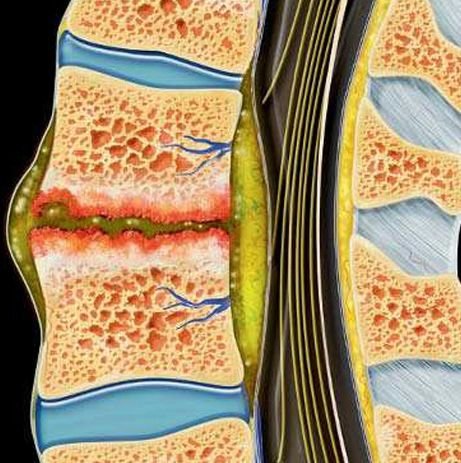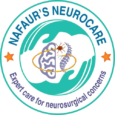Infections Secondary to Dermal Sinus Tracts
Infections Secondary to Dermal Sinus Tracts
Dermal sinus tracts are rare congenital malformations that form as a result of incomplete separation between the skin and spinal cord during early fetal development. These narrow, epithelial-lined tracts often extend from the skin of the midline back into deeper spinal structures, sometimes reaching the spinal canal or even the central nervous system. In children, these tracts can become a direct route for bacteria to enter the spine, leading to recurrent meningitis, spinal abscesses, or life-threatening infections. In Bangladesh, where access to early imaging and surgical intervention may be limited, infections secondary to dermal sinus tracts are often underdiagnosed and underreported, contributing to high morbidity. 🌍 Significance in the Bangladesh Context In Bangladesh, many infants with congenital spinal skin dimples or pits go unexamined due to lack of awareness. Without early detection, dermal sinus tracts can cause: 🧠 Recurrent meningitis or brain abscesses 🦴 Spinal cord abscesses or osteomyelitis 🧑🦽 Permanent neurological deficits 💀 Fatal infections if untreated As a leader in pediatric neurosurgery, Dr. Md. Nafaur Rahman specializes in identifying and surgically correcting these tracts before or after infection occurs, offering children across Bangladesh a safe, infection-free future. ⚠️ Clinical Signs of Infections from Dermal Sinus Tracts Infected dermal sinus tracts often first present in infants or young children, but can go unnoticed unless actively screened. Warning signs include: 🔍 Midline pit, dimple, or tuft of hair on the lower back 🩹 Intermittent pus or fluid discharge from a skin opening 🌡️ Episodes of fever, lethargy, or irritability 😖 Back pain or neck stiffness ⚠️ Neurological changes – leg weakness, difficulty walking, or bowel/bladder issues 🔁 Recurrent meningitis or unexplained high fevers 🧠 Seizures or altered consciousness in severe CNS infections “Any skin dimple over the spine, especially if discharging or infected, must be evaluated with MRI. Delay can lead to preventable disability or death.” — Dr. Md. Nafaur Rahman 🧬 Pathophysiology and Risk Factors Congenital anomaly caused by incomplete disjunction of neural ectoderm and cutaneous ectoderm during embryogenesis Commonly associated with spinal dysraphism Infection arises when skin bacteria travel through the sinus tract into sterile spinal spaces Common pathogens include: Staphylococcus aureus E. coli Anaerobes or mixed flora Mycobacterium tuberculosis in rare cases in endemic regions 🧪 Diagnosis: Early Imaging Saves Lives Dr. Nafaur Rahman uses advanced imaging and clinical expertise to confirm the diagnosis: 🧲 MRI of spine and brain – Crucial for evaluating sinus tract extent, spinal cord involvement, presence of abscess or tethering 🔬 Ultrasound spine – For newborns before fontanelle closure 📸 X-ray – May show bony anomalies (spina bifida, lamina defects) 🧪 CSF analysis – In suspected meningitis (may show elevated protein, low glucose, WBCs) 🧫 Wound culture or pus swab – To guide antibiotic therapy 🧬 GeneXpert MTB/RIF – If TB is suspected 🛠️ Treatment: Surgery is Curative Once diagnosed, complete surgical excision of the dermal sinus tract is the definitive treatment to prevent or manage infections. ✅ Surgical Goals: Total removal of the dermal sinus tract Drainage of any abscesses (intraspinal, subdural, or subcutaneous) Untethering the spinal cord, if involved Repair of dura or bone defects if needed Dr. Nafaur Rahman performs: Microsurgical excision with neural preservation Minimally invasive techniques when feasible Emergency decompression and abscess drainage in acute neurological deterioration Post-operative antibiotic therapy guided by culture “Surgical excision before infection is ideal, but even in advanced cases, timely intervention can restore function and prevent lifelong disability.” — Dr. Md. Nafaur Rahman 🔁 Post-Operative Management & Recovery 💊 Antibiotics for 2–6 weeks depending on infection severity 📅 Serial imaging and blood tests to monitor recovery 🧠 Neurological rehabilitation for affected children 🧒 Long-term developmental follow-up 🛡️ Parental counseling and genetic evaluation if other anomalies exist 🚨 Complications of Delayed Treatment 🧠 Recurrent or chronic meningitis 🧑🦽 Permanent paralysis or weakness 💀 Sepsis or brain abscess leading to death 🧒 Learning delays and developmental regression 🚫 Inability to attend school or socialize due to neurological disabilities 👨⚕️ Why Trust Dr. Md. Nafaur Rahman? 🧠 One of the most experienced pediatric neurosurgeons in Bangladesh 🏥 Specialized training in congenital spinal disorders and infection management 🧒 Offers comprehensive child-friendly care at Bangladesh Paediatric Neurocare Centre 🌐 Practices at National Institute of Neurosciences & Hospital (NINS) – the country’s top neuro institute 🧬 Multidisciplinary approach involving radiology, microbiology, infectious diseases, and rehabilitation 📞 Book an Appointment Today Dr. Md. Nafaur Rahman Assistant Professor, Pediatric Neurosurgery, NINS Chief Consultant, Bangladesh Paediatric Neurocare Centre 📞 Serial/Appointment: 01912988182 | 01607033535 🌐 Website: www.neurosurgeonnafaur.com
Infections Secondary to Dermal Sinus Tracts


